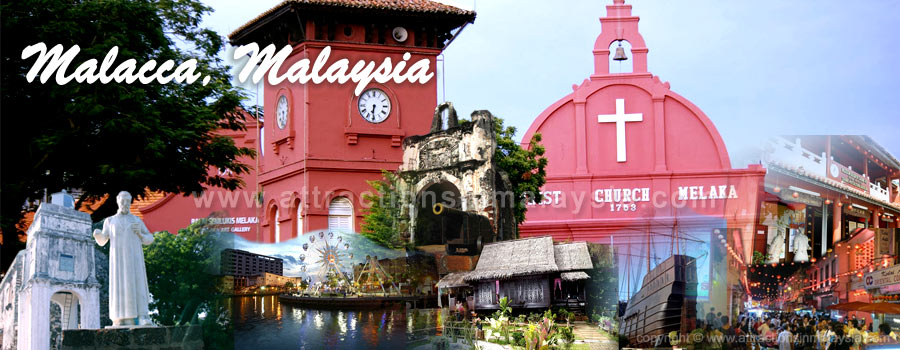About Malacca
Malacca is a place where many culture meet and fused. One of the most pronounced
influence is the Portuguese architectural that one can see around Malacca. When the
Portuguese came in 1511, they built a fort overlooking the river, and named it A Famosa.
It was built to maintain the Portuguese stronghold across the Far East, to date it is
one of the oldest European Architerure present in South East Asia. Besides, The Portuguese
Square is also a place to enjoy the Portuguese culture within Malacca. Its located 20 minutes
from Malacca town, within the Portuguese Settlement in Ujong Pasir. The square is facing the sea
where you can catch a hearty Portuguese food while enjoying the sea breeze.
Apart from Portuguese influence, there is also Chinese descendant's settler that have
adopted into the local Malay culture through intermarriage, forming the distinct Baba and Nyonya
flavours. Be sure to visit Baba and Nyonya Heritage Musuem to view the unique carving of furniture
and house interior. As mentioned earlier, Malacca is a place where many culture meets. The Stadthuys,
which means the Municipal Town Hall in Dutch, and it's the biggest and oldest Dutch building in
Southeast Asia, located in the Malacca Town Square. It was built when the Dutch took over Malacca
from the Portuguese and it took nearly 20 years to completion where the building materials
are imported from Netherlands.
If you are an antic lover, Jonker Street will be a perfect place for you. It's pleasant
for a slow stroll where you can get delicious local delicacies, Nyonya fashions and shoes
as well as cafes and pubs. There are also a few Baba and Nyonya style accommodation in
Jonker Street, where you can truly experience the living of the 'Peranakan', example, The Baba House.
Otherwise, there are plenty of hotels around Malacca. Other attractions of Malacca
include Marine Musuem and Zoo Malacca.
|

